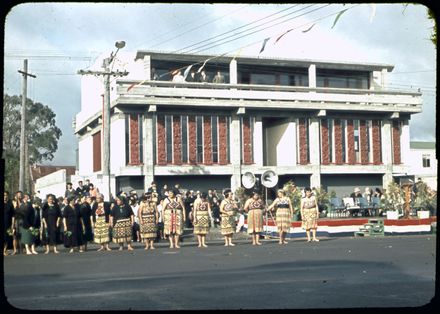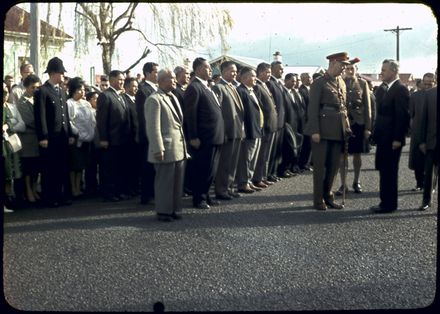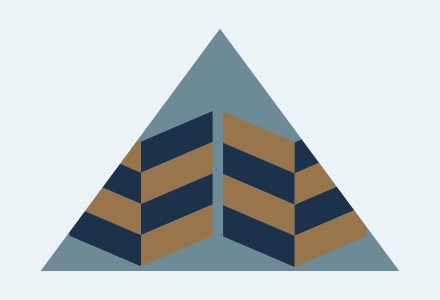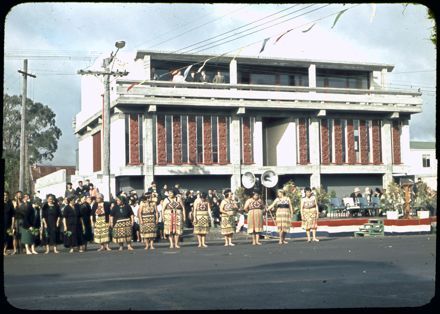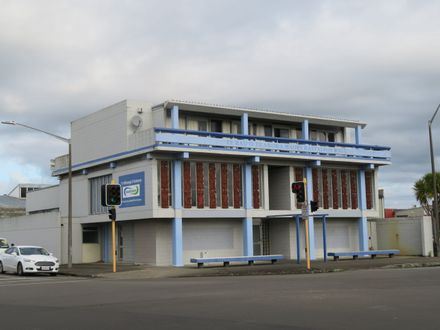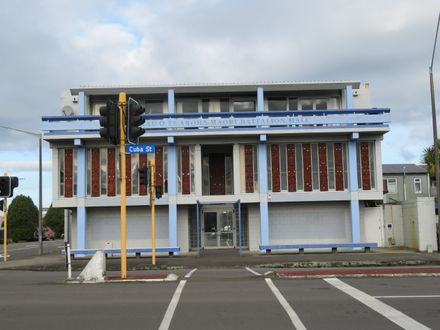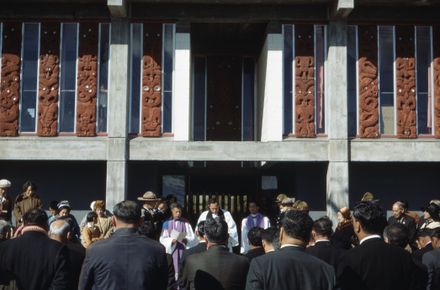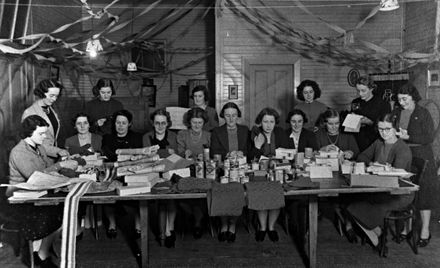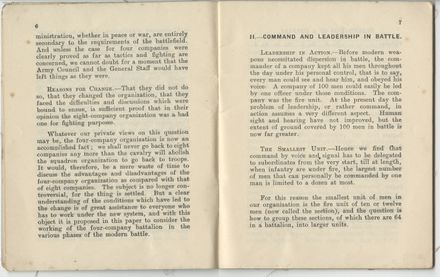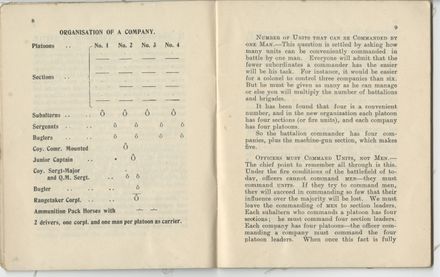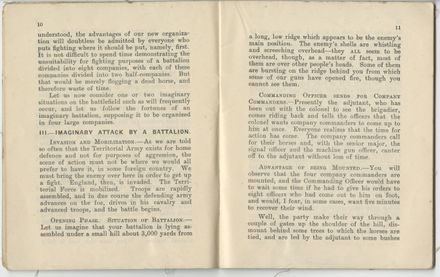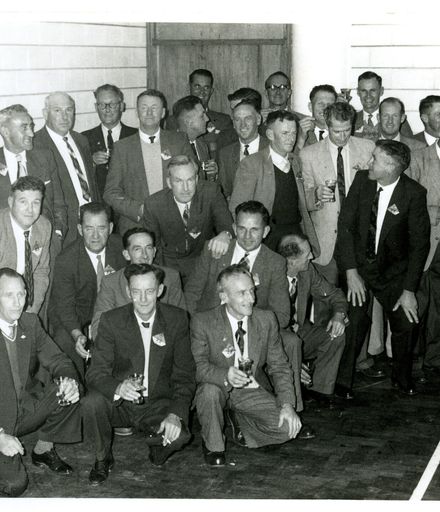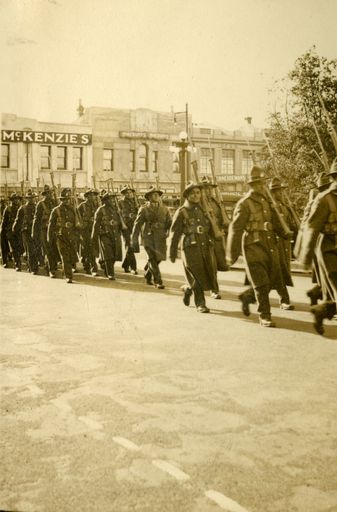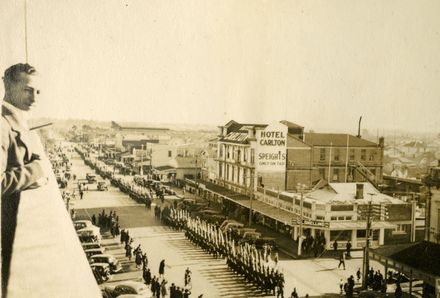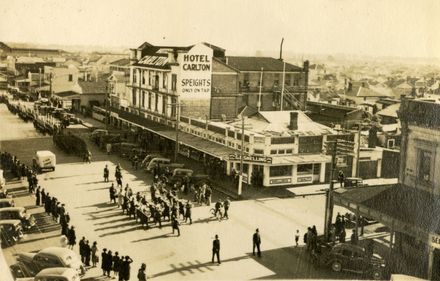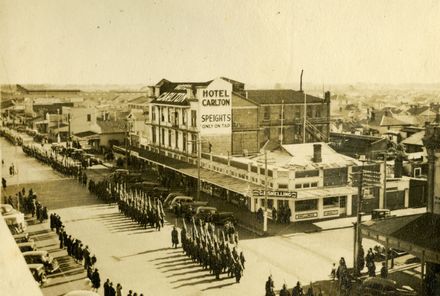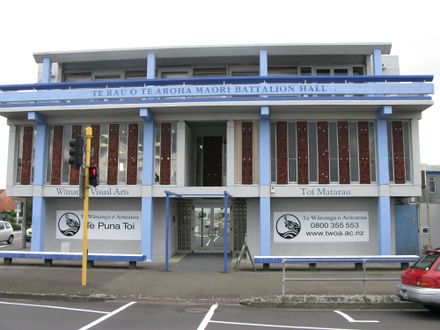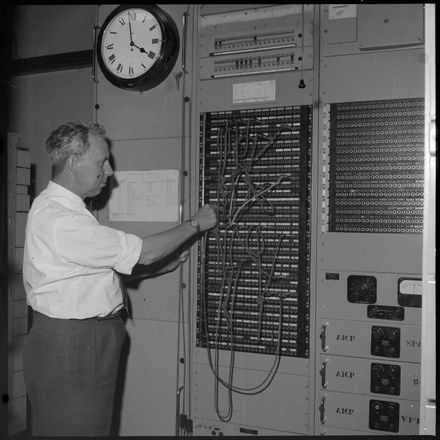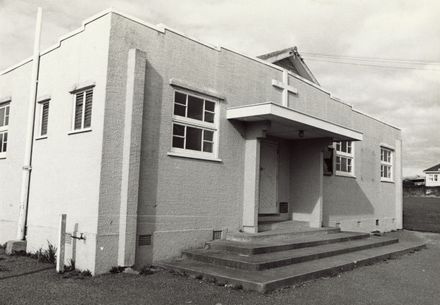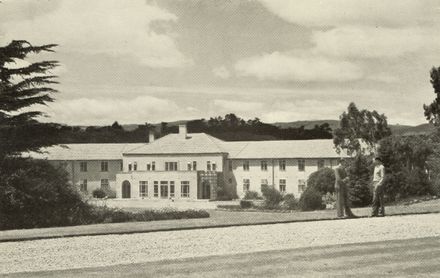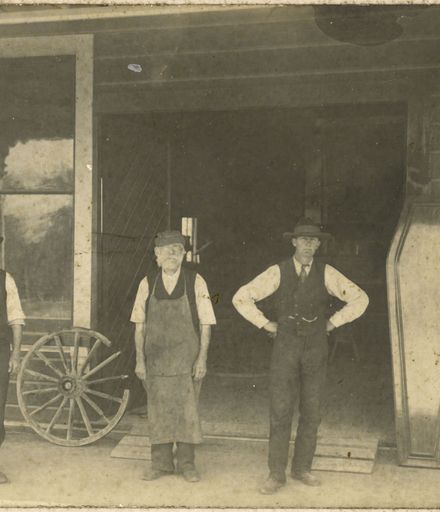Māori Battalion Hall
The Māori Battalion Hall, named 'Te Rau Aroha' (emblem of gratitude), was erected in Palmerston North as a national memorial to the men of the 28th (Māori) Battalion who lost their lives in the Second World War. It was designed by John Scott, architect of Hastings, and the 14 carved panels on the facade (8 feet x 1 foot 6 inches) were carved by Kelly Kereama of Feilding. Inside 639 names of those who did not return are inscribed on 14 brass plates. All the concrete, both inside and out, was left unplastered and with the marks of the boxing to symbolise the strength of the Māori people. The three-storey building was planned as a community centre to serve all races and was opened in June 1964 by the Governor General, Sir Bernard Fergusson.


